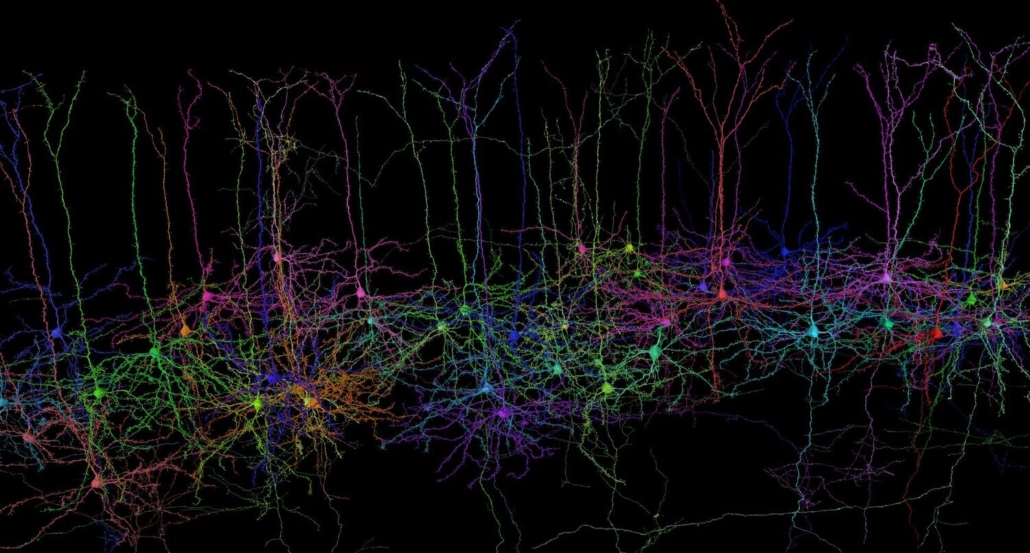How does the shape of a cortical neuron relate to its function? European research team gets funding to find out

Prof. Ecker and his team want to develop machine learning techniques to describe the shape and function of neurons in the cerebral cortex and find out how the shape relates to the function. © MICrONS Consortium
The European Research Council (ERC) has awarded €1.5 million to computational neuroscientist Professor Alexander Ecker from the University of Göttingen and the Max Planck Institute for Dynamics and Self-Organization (MPIDS) to conduct research on how the shape of a neuron in the cerebral cortex relates to its function.
The funding, a Starting Grant to be provided over five years, is for Prof Ecker and his team’s project: “Deep Neuron Embeddings: Data-driven multi-modal discovery of cell types in the neocortex”.
The “form follows function” principle was proclaimed by the early 20th century architect Louis Sullivan to be a universal law of nature and later formed the basis of the Bauhaus style.

The computational neuroscientist Professor Alexander Ecker from the University of Göttingen and the Max Planck Institute for Dynamics and Self-Organization (MPIDS) has received a Starting Grant from the European Research Council.
“Whether this also applies to the brain, however, is currently unknown,” says Prof. Ecker, describing the background to his work. “For example, it is not yet clear exactly how the shape and function of the neurons in the cerebral cortex are related.”
Building upon recent scientific advances, Ecker and his team can now address this question. For a long time, it was only possible to measure either the morphology (shape) of a neuron or its functional activity, but not both at the same time.
Diversity of morphological features
Cortical neurons exhibit a wide diversity of shapes with complex branching patterns and other morphological features. Similarly, they exhibit a great degree of diversity in how they process stimuli during visual perception. To find out how features of a neuron’s shape relate to its role in sensory information processing, complex mathematical descriptions are needed. The research team will draw upon a large dataset from an earlier collaboration funded by the US Brain Initiative, which investigated the anatomy and activity of about 100,000 neurons of the visual cortex of a mouse.
Prof. Ecker and his team of scientists – with the help of the ERC funding – want to develop machine-learning methods to describe both the neurons’ shape and their function mathematically, recognise patterns in the data, and relate their form and function to each other.
This research is also made possible through the collaboration of a number of research institutions across the Göttingen Campus.
Prof. Ecker has been Professor of Data Science at Göttingen University since 2019 and is also a Max Planck Fellow at the MPI for Dynamics and Self-Organization. At the University, he holds his professorship at the Institute of Computer Science and also serves as a board member of the Campus Institute Data Science (CIDAS), the interface for collaboration in the field of Data Science at the Göttingen Campus.


